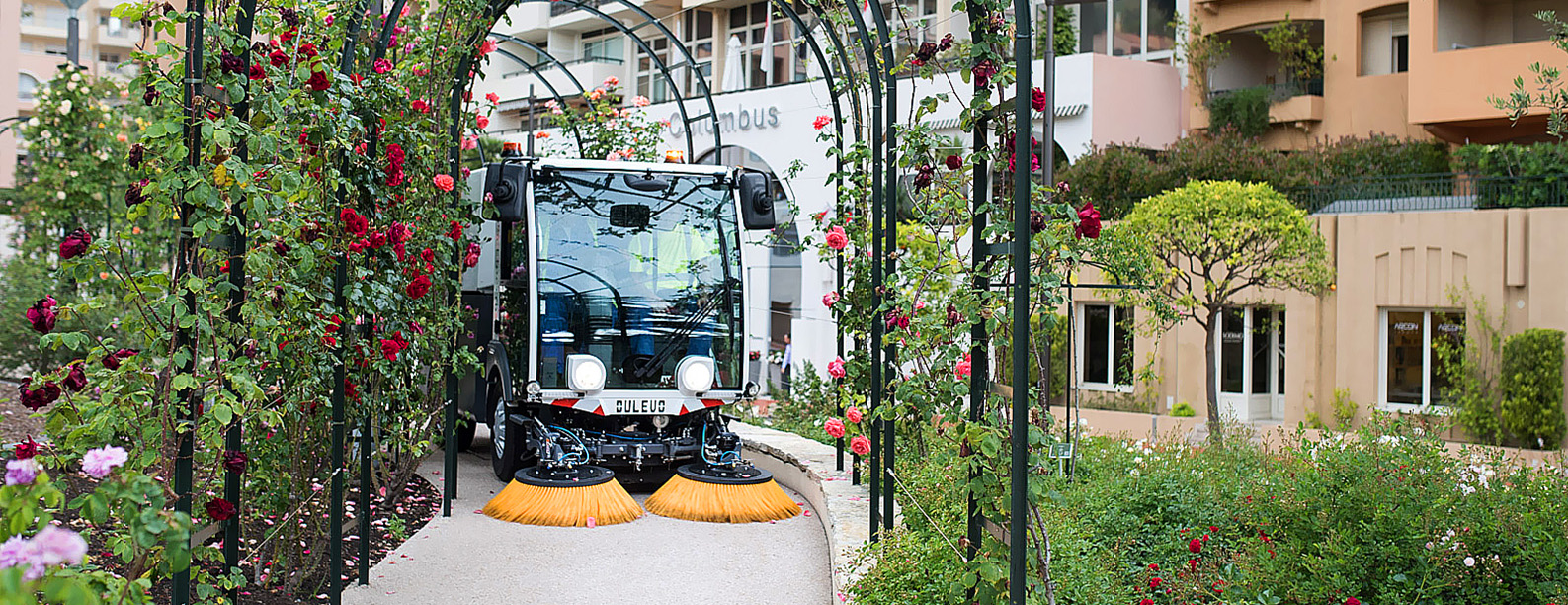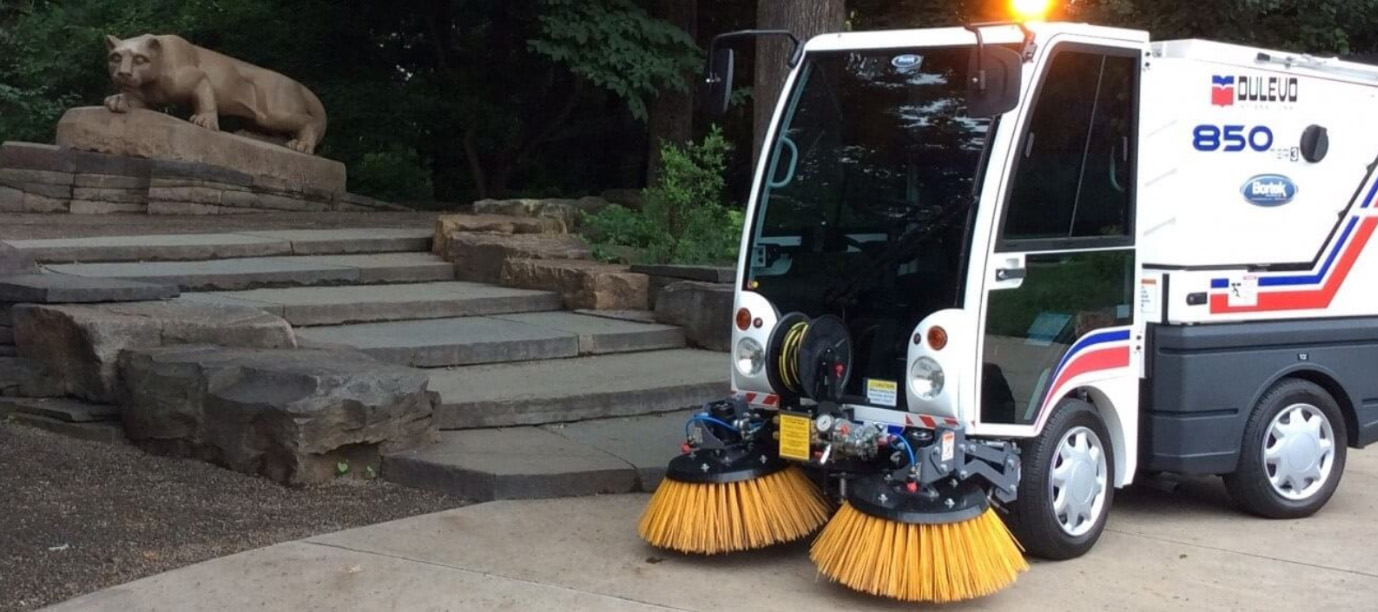
It’s a Walk in the Park
Pedestrian Walkway Cleaning Equipment
Everyone knows about street sweeping, but with pedestrian paths it can often be of the mindset “build it now, figure out how to clean it later”. Sidewalks and pedestrian lanes are essential for keeping walkers safely out of vehicle traffic, plus they do wonders for encouraging local business, bring the health benefits of exercise, and help cut down on vehicle traffic. Locations like plazas, public parks, amusement parks, and college campuses utilize walking paths almost exclusively.
If these paths aren’t kept clean of litter, dirt, leaves, and other debris, they won’t just drive away foot traffic by being unattractive, they may become unsafe with tripping and slipping hazards. Simply using a broom or leaf blower to push dirt and debris somewhere else can just postpone the problem. Dirt moved in this way often settles in lower areas such as curb ramps, where it is likely to mix with standing water for an especially slippery mixture. Just as sidewalks are repaired when cracks form, they should be periodically be cleaned of dirt and debris.
According to the Federal Highway Administration, very few communities have an active citywide sidewalk sweeping program, even though most do have regular street sweeping. The communities that do have organized sidewalk sweeping vary widely in how frequently they clean, with some sweeping weekly and others cleaning as little as once a year. Many communities leave the sidewalk sweeping in the hands of neighboring property owners, meaning that some pedestrian walks might never get swept.1

How to sweep sidewalks efficiently
Just as communities vary in the frequency of their sidewalk cleaning, there isn’t much consistency in their sweeping methods either. Without the proper equipment, cleaning footpaths can be time-consuming and ineffective. Push brooms and leaf blowers are not an ideal solution because they require slow, manual, on-foot operation, and they only push dirt away for someone else to clean up, or for the dirt to blow right back where it was. A street sweeper wouldn’t have this problem because it covers a wide area, requires little effort from the operator, and contains the dust, dirt, and debris in a hopper as it cleans.
But alas, street sweepers cover too wide of an area to be used for pedestrian paths, right? Not so! In fact, some full-sized street sweepers like those from Dulevo have options for a front articulating broom that can reach onto curbs, paved shoulders, and center islands.
One of your best options for sweeping walking paths though, will be a mini-sweeper that can fit on the path itself. Sweepers like this tend to have exceptional maneuverability, visibility, dust control, and low noise emissions – all essential for working near foot traffic. Now there are even 100% electric sweepers which are both environmentally friendly, even quieter still, and won’t blow exhaust in the faces of pedestrians. It doesn’t matter much whether the walkway if made of cement, asphalt, bricks, or pavers, these sweepers can handle it.
As an example, the Dulevo 850 Mini Sweeper can sweep a 54 to 76-inch path, and the brooms can be adjusted fit a variety of path widths. The sweeper itself is a mere 43.3 inches wide. Yet, even at that compact size, it has a 1.5 cubic yard debris hopper that can raise for high dumping into dumpsters.
Of course, some sidewalks are more narrow still. For those narrow paths without too much area to cover, one may consider using a powered or manual walk-behind sweeper.

Deep Cleaning Sidewalks with Pressure Washing and Recovery
For an even more thorough cleaning of deeply ingrained dirt, grease, and oil from paved walkways there’s pressure washers from Cyclone Technology. These aren’t mere pressure washers though. Just as mini sweepers contain debris in a hopper, Cyclone pressure washers are able to recover the dirty water as they clean. Once again, the goal is contain the dirt rather than push it somewhere nearby. Cyclone’s claim to fame is its ability to use powerful airflow to blast the ground with hot water and also vacuum it back up for recovery. It’s as easy as walking down a path and leaving a trail of clean behind. The walk-behind pressure washer’s water supply and recovery tank can be used mounted on a truck or trailer to be used from a distance. Cyclone also has a pressure washing and recovery vehicle that’s about the size of a mini sweeper which can clean an even wider surface area with the convenience of driving.
You’ve got pedestrian paths, and that’s great. Now keep them great by keeping them clean, safe, and appealing.
1. “A Guide for Maintaining Pedestrian Facilities for Enhanced Safety” – safety.fhwa.dot.gov
All Walking Path Cleaning Equipment | Sidewalk & Pedestrian Path Sweepers | Pressure Washing and Recovery
